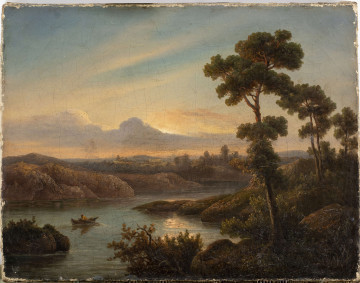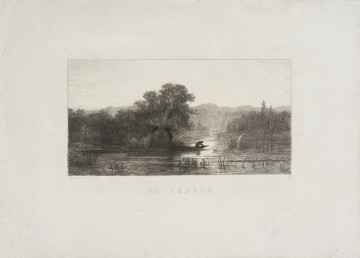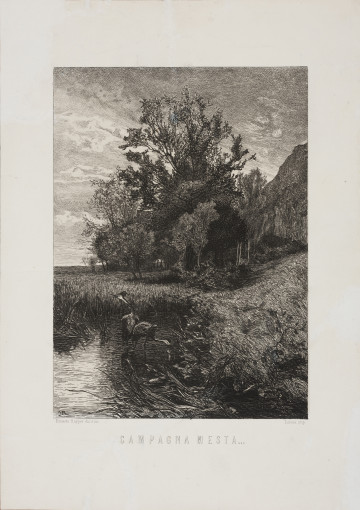
Landscape with the water
1862
National Museum in Lublin
Part of the collection: Landscape
Landscape is a motif widely taken up by famous artists such as Aleksander Gierymski, Józef Chełmoński and Stanisław Masłowski. Nature has fascinated artists for centuries and formed part of the background of elaborate figural compositions. In the nineteenth century Polish art it became an independent theme of outstanding works. Impressionism, which took its name from Claude Monet's landscapes, can be regarded as significant for this genre. The Impressionists, by going outdoors and painting from nature, had a great influence on the perception of landscape, which was no longer just an insignificant element of a composition. Feliks Jabłczyński described the role of Impressionism in Masłowski's work as follows: “Impressionism had to make an impact on a painter so sensitive to colour, technique, movement and the play of colours. That is why Masłowski also went through this cheerful period: ‘I painted a picture ... let them bite it!’. But in his case it did not last long, the old seriousness returned; what remained of his impressionism was an expansion of technique, a strengthening of colour, a bolder play of colours, an increase in the means and talent in general”.
Nature has been a timeless source of artistic inspiration for many generations. As Eugeniusz Niewiadomski observed: “Nature is the subject of Masłowski's deep observations, but he derives only what he specifically likes – completely ignoring the rest”.
The medium in which Masłowski frequently expressed himself was watercolour. It is a technique that allows to recognize a painter's mastery. It is quite impressionistic in its nature, as it requires quick, precise and thoughtful work, leaving no room for corrections. It requires certainty in putting paint on paper, and the working time is limited by its drying. Artists used it as a kind of preparatory sketch for easel painting or a project for polychrome or other painting works. It functions excellently as an independent technique testifying to the artist's sensitivity to colour, so easily changeable in this case, depending on the amount of water and pigment. Watercolour itself remains sensitive to light and weather conditions. When saving too much on materials, it fades prematurely or darkens under the influence of the acidity of the paper. At the same time, it offers many possibilities for effects and colours, as can be seen in Masłowski's work.
Klara Sadkowska
Author / creator
Dimensions
cały obiekt: height: 98,8 cm, width: 67 cm
Object type
painting
Technique
aquarel
Material
cardboard, aquarel
Creation time / dating
Creation / finding place
Owner
The National Museum in Lublin
Identification number
Location / status

1862
National Museum in Lublin

1870
National Museum in Szczecin

1870
National Museum in Szczecin
DISCOVER this TOPIC
National Museum in Szczecin
DISCOVER this PATH
Educational path